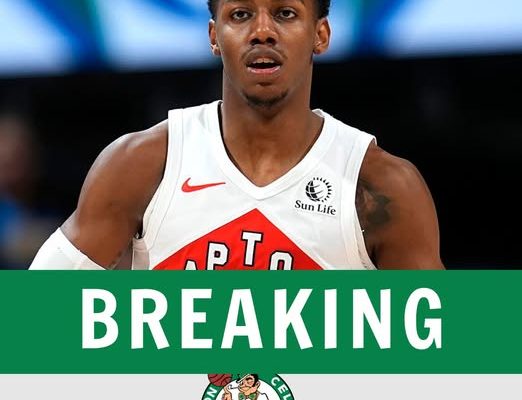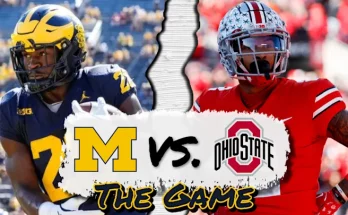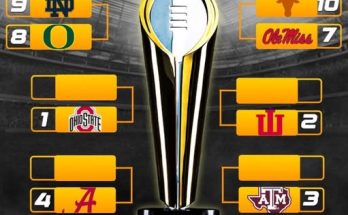In the ever-evolving landscape of the NBA, blockbuster trades are the lifeblood that keep fans on the edge of their seats, sparking heated debates and altering the league’s balance of power overnight. Recently, the Boston Celtics, a franchise with a storied history and championship pedigree, have been linked to a seismic trade that could reshape their future and send shockwaves throughout the league. Reports suggest that the Celtics are considering sending one of their highest-paid stars, a player with a massive $118 million contract, to the reigning NBA champions in exchange for a massive draft package loaded with future assets. This potential move has captivated basketball fans and analysts alike, raising questions about the Celtics’ long-term vision and the dynamics of rebuilding through the draft versus maintaining an established core.
The Celtics’ superstar in question is undeniably one of the league’s top talents, a player whose skills and leadership have been crucial in Boston’s recent successes. Yet, despite his individual brilliance, the Celtics have struggled to take that final step toward a championship in the past couple of seasons, often stumbling in the playoffs against elite competition. The high salary attached to this player, which carries significant luxury tax implications, has also been a concern for the franchise’s front office as they strive to build a sustainable championship contender. The team’s willingness to explore such a drastic trade indicates a possible shift in strategy from relying heavily on veteran stars toward investing in the future through young talent and draft capital.
The team reportedly interested in acquiring this $118 million star is none other than the current NBA champions, a franchise that has built a reputation for aggressive moves aimed at maintaining their dominance. For the champions, adding a proven star with elite scoring, playmaking, and defensive capabilities would solidify their roster and keep their title window wide open. The acquisition would come with a hefty price, however, as Boston is asking for a substantial draft package in return. This package reportedly includes multiple first-round picks spanning the next few years, as well as promising young players who could blossom into key contributors down the line.
Draft capital in the NBA has become increasingly valuable, especially for teams looking to build sustainable success. For the Celtics, trading away a max-level salary to restock their pipeline with high-potential prospects could be a masterstroke in the long term. The Celtics’ front office, led by a general manager known for his savvy in navigating complex trades and cap situations, is believed to be aiming for a roster overhaul that balances competitiveness with financial flexibility. The influx of draft picks would not only provide the Celtics with the opportunity to select elite young talent but also give them valuable trade assets that could be used to facilitate future moves or absorb contracts in salary cap maneuvers.
Critics of the trade speculate that moving a marquee player with such a hefty contract might signal that the Celtics are conceding the present in favor of a rebuild. After all, trading a star of this caliber is always risky, particularly when that player is still in his prime and capable of delivering at a high level. However, advocates argue that the modern NBA landscape demands adaptability and foresight. With the salary cap continually rising and teams increasingly relying on youth and versatility, the Celtics could be positioning themselves to avoid the pitfalls that come with aging superstars and inflated contracts. This kind of bold move might enable them to return to championship contention sooner by developing a deep, young core that grows together.
For the NBA champions on the other side of the trade, the opportunity to add a $118 million star cannot be overstated. Their current roster is built around a core of all-star talent, championship experience, and a strong culture of winning. The addition of this Celtics star would provide them with another elite scoring option and a versatile defender, enhancing their ability to compete against the league’s best teams. It would also send a clear message to the rest of the NBA that the reigning champs are committed to maintaining their supremacy and are willing to take risks to stay ahead.
Financially, the trade presents some challenges for both teams. Boston would be offloading a large contract, which could reduce their luxury tax burden and open up cap space for future free agent signings or extensions for young players. The champions, meanwhile, would be taking on that significant salary, likely pushing them deep into luxury tax territory. However, the champions have demonstrated a willingness in recent years to pay the luxury tax to assemble and maintain a championship-caliber roster. For them, the potential rewards outweigh the costs, especially if the trade results in a repeat championship or sustained success.
One of the key factors fueling speculation about this trade is the timing. The NBA offseason is often a period of intense maneuvering as teams assess their rosters, salary cap situations, and future prospects. The Celtics’ willingness to consider trading a player with such a significant contract suggests that the front office has already identified their priorities moving forward. Whether these priorities include rebuilding around younger talent, pursuing a different style of play, or simply reducing financial strain, the implications of this trade could reverberate for years.
On the Celtics’ side, the potential draft picks acquired could be instrumental in rebuilding or retooling the roster. The draft is a fertile ground for finding cornerstone players who can grow into superstars, and Boston has a history of developing talent through the draft. By accumulating assets, the Celtics give themselves flexibility. They can either use those picks to select players who fit their system or package them in future trades to address specific needs. This kind of asset accumulation is often the foundation of successful team-building in the NBA, especially in an era where youth, athleticism, and versatility are highly prized.
Meanwhile, the reigning NBA champions’ roster, already stacked with talent, would gain an immediate boost in depth and star power. Adding a player capable of handling the ball, creating his own shot, and defending multiple positions would elevate their lineup’s versatility. It would also provide their coach with more strategic options during crunch time, especially in the playoffs where matchups and rotations are crucial. The presence of another star alongside their existing core could also ease the burden on their current stars, potentially prolonging their careers and maintaining peak performance levels.
However, such a blockbuster trade is not without risks for both franchises. For Boston, there is always the danger that the draft picks they acquire do not pan out as hoped. The draft is inherently unpredictable, and even high picks can sometimes fail to meet expectations. Moreover, giving up a proven star leaves the team with a gap in leadership and production that the young players will need to fill quickly. If the rebuilding process stalls, the Celtics could find themselves in a difficult position, stuck between a fading core and unproven prospects.
For the champions, absorbing a huge contract could limit their financial flexibility in the coming years. If the new acquisition suffers an injury or decline in performance, the hefty contract could become a burden, especially given the luxury tax implications. Additionally, integrating a new star into an already established system can present chemistry challenges. The team’s management and coaching staff would need to carefully manage roles and expectations to ensure a smooth transition and maintain team cohesion.
The speculation surrounding this trade has also sparked a flurry of reactions among players, fans, and analysts. Celtics supporters are divided; some are excited about the potential influx of young talent and the strategic financial relief, while others worry about losing a beloved star who represents the team’s competitive aspirations. Meanwhile, fans of the reigning champions are largely enthusiastic, viewing the trade as a statement of intent and a move that could secure more championships.
In the broader context of the NBA, this potential trade reflects several prevailing trends. Teams are increasingly valuing draft capital and youth, even at the expense of proven veterans with large contracts. The salary cap and luxury tax system continue to shape roster construction in profound ways, forcing teams to balance competitiveness with financial prudence. Additionally, the pressure to win now often competes with the need to build for the future, creating challenging decisions for front offices.



